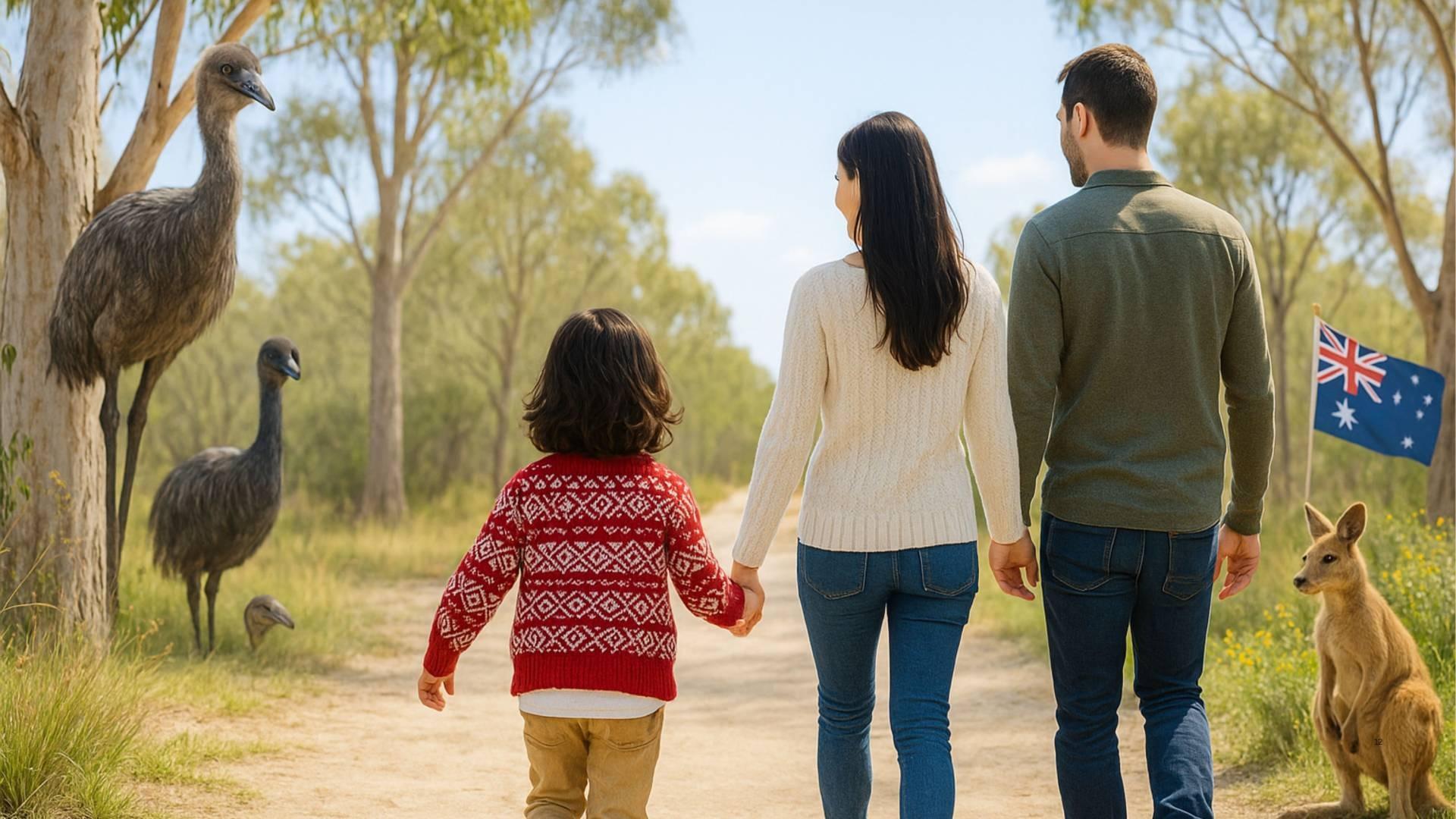A Comprehensive Guide to the Australian Child Visa (Subclass 101): Reuniting Families

Australia is not only known for its beautiful landscape and quality of life, but also for its commitment to family reunion through various immigration programs. Among them, child visa subclass 101 plays an important role in helping the children of Australian citizens, permanent residents, or eligible New Zealand citizens join their parents and create a new life together in Australia.
If you are parents living in Australia and want your child to stay with you permanently, then the subclass 101 visa may be the right route. In this blog, we will cover all the things that you need to know about child visa 101 - from eligibility and application stages to major benefits and general disadvantages.
What is a child visa (Subclass 101)?
The Child Visa (Subclass 101) is a permanent visa that allows a child to live permanently in Australia, whether biological, adopted, or stepchild. This visa is ***gned for children outside Australia at the time of application and grant.
Once granted, the child can:
Live in Australia permanently
Study and work in Australia
Access Medicare, Australia’s public healthcare system
Apply for Australian citizenship if eligible
Sponsor relatives once they become eligible themselves
This visa is particularly important for parents who have settled in Australia and now want to bring their dependent children to join permanently.
Who can sponsor a child?
To be eligible as a sponsor, the parent must be:
An Australian citizen, or
An Australian permanent resident, or
An eligible New Zealand citizen
The parent must also:
Be settled in Australia, meaning they have lived there lawfully for at least 2 years (in most cases)
Be willing to sponsor the child and support them financially
If the child is under the age of 18, then there is legal custody or consent from other parents when he is implemented.
Who can apply for a visa?
To qualify for child visa subclass 101, there should be an applicant:
Outside and when visas are given outside Australia at the time of application
The biological, adopted, or stepchild of the sponsoring parent
Less than 18 years of age, or:
Between 18 to 25 years of age and a full -time student, or
Over 18 and dependent on the sponsoring parent due to disability
The child must also be:
Unmarried
Not engaged or in a de facto relationship
Meet the health and character requirements (for children over 16)
Have written consent from both parents, or have full legal custody from the sponsor parent
Including Other Family Members
In some cases, a younger brother of a primary hair visa applicant may be included in the same application. This can reduce overall costs and streamline processing. However, each child must personally meet the same eligibility criteria.
Application process
Here is a step-by-step observation to apply for sub-class 101 visas:
Prepare documents
Identity documents for the child
Birth certificate or adoption papers
Consent documents (from the other parent, if applicable)
Proof of dependency (for children over 18)
Sponsorship documents from the parent
Lodge the Application
The application must be made from outside Australia
Submit the form and pay the required visa application charge
Visa Processing
The Department of Home Affairs assesses the application
Health and character checks may be required
Additional documents may be requested
Visa Decision
Once granted, the child becomes a permanent resident of Australia
The child can travel to and from Australia freely and start using services like Medicare
Costs Involved
By 2025, the visa application charge for subclass 101 is about 3,055 AUD for the main applicant. Can apply for additional fees:
Including additional children
Health examinations
Police approval certificate
Translations and document certifications
Keep in mind that these fees are non-worthy, even if the application fails.
How long does it take?
Processing time varies depending on individual circumstances. By mid -2025:
75% of applications are processed in around 12–14 months
90% of applications are processed within 18 months
The delay is often caused by incomplete applications or missing documents, so complete preparation is necessary.
Child Visa Benefits 101
Permanent residence from first day
Reach education, healthcare and employment rights
Provides a clear passage for citizenship
The child allows the future family members to sponsor family members in the future
This visa ensures that children can live in a safe, stable and supportive environment in Australia with their parents.
Common mistakes to escape
Incorrect age classification – ensure the child meets age and dependency criteria.
Insufficient evidence of relationship – especially important for adopted or stepchildren.
Missing consent documents – if the other biological parent has legal custody.
Applying from inside Australia – this is an offshore visa only.
Not disclosing the previous visa or health issues - complete transparency is necessary.
final thoughts
Child visa subclass 101 is one of the most powerful tools for reunion of families in Australia. This ensures that children can live in a safe, nutrition environment with their parents and reach equal rights and benefits of any other permanent resident.
- Art
- Causes
- Crafts
- Dance
- Drinks
- Film
- Fitness
- Food
- Games
- Gardening
- Health
- Home
- Literature
- Music
- Networking
- Other
- Party
- Religion
- Shopping
- Sports
- Theater
- Wellness


